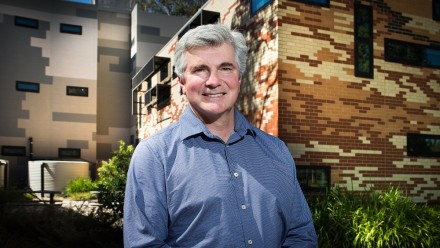Meet one of the researchers working on the big data behind the energy transition
Switching off coal will need more than wind turbines and transmission lines. The scale of this challenge was one of the things that attracted Associate Professor Marnie Shaw to the field after working in medical imaging, another area that is data-heavy. She is now applying these same data analysis and machine learning techniques in her work at the ANU Centre for Energy Systems.
Marnie is interested in the development of smart grids – electricity networks that use digital technology and real-time data to improve efficiency, reliability, and security of power delivery.
“So we have a couple of choices, and one is that we just build a whole lot of energy generation and energy transmission and don't think about coordinating it. That is not going to be a low-cost solution.”
Moving to smart grids means that we can use data to manage our grids. This requires some upgrades of our infrastructure, like installing smart meters and control systems.
“It means it's lower cost for all of us because we're pushing a whole lot more electricity through the same ‘pipes’ that we have already."
Marnie has been fascinated with data and computer science since her undergraduate degree.
“That was my love at university. I did a subject called computational physics and we had to do programming in an ancient language called Fortran that nobody uses anymore.”
She still loves programming to this day and teaches second year engineers how to use Python to crunch and visualise data. But Marnie’s love of science started even earlier, when a school teacher encouraged her interest in physics.
“He just really encouraged curiosity in the classroom and that had me hooked. I was off reading physics journals and trying to understand the universe around us."
This eventually led to her to a PhD in physics and eventually working at a biotech start-up in Boston (United States) before undertaking research on brain imaging in Germany and Australia.
Looking to the future, Marnie is excited about her current research projects exploring the energy storage potential of batteries and electric vehicles (EVs) and how this can feed into our electricity grids. Read more about a related research project from one of Marnie’s colleagues here.
“The battery capacity in EVs is massive. It's on the order of Snowy 2.0, and if we figure out how to make sure we do smart charging and vehicle-to-grid with EVs, that will make a massive impact in our future electricity system. That's very exciting.”











